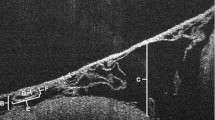Abstract
Abusive head trauma, previously termed “shaken baby syndrome”, refers to head injuries inflicted on young infants by their caregivers. There is currently a lack of scientific evidence around the causes of these injuries, but violent shaking has been implicated [1]. Computational modelling of the infant head can help to address ambiguities surrounding the diagnosis of abusive head trauma. To validate this numerical approach, in-vivo brain deformations of the adult brain undergoing mild angular accelerations were used.
A set of mild acceleration in-vivo adult head rotation experiments were conducted. The deformations of the brain under these rotational motions were measured using tagged magnetic resonance imaging techniques. These experiments were conducted within the Center for Neuroscience and Regenerative Medicine, Bethesda, MD [8]. A corresponding computational finite element model of the adult head undergoing mild accelerations was created using ANSYS Workbench (ANSYS, Inc.). A fluid–structure interaction model was implemented, which modelled the cerebrospinal fluid and the solid segments of the adult head. Displacements predicted by the finite element model were compared to the associated experimental data in order to verify the assumptions and parameter settings of the finite element model. Results demonstrated that the fluid–structure modelling framework could predict, to within experimental error, the deformation of the adult brain.
The overall goals of the whole project were to create a biophysically based computational model of an infant’s head, and to use this model to investigate the mechanical effects on the infant brain under a shaking motion. Such models may ultimately be used to determine the link between shaking motions and the injuries observed in infants with abusive head trauma.
Access this chapter
Tax calculation will be finalised at checkout
Purchases are for personal use only
Similar content being viewed by others
References
Christian CW, Block R (2009) Abusive head trauma in infants and children. Pediatrics 123:1409–1411
Chiesa A, Duhaime A-C (2009) Abusive head trauma. Pediatr Clin N Am 56:317–331
Minns R, Busuttil A (2004) Patterns of presentation of the shaken baby syndrome. Br Med J 328:766
Sieswerda-Hoogendoorn T, Boos S, Spivack B, Bilo RA, van Rijn RR (2012) Educational paper: abusive head trauma part I. Clinical aspects. Eur J Pediatr 171:415–423
Tuerkheimer D (2009) The next innocent project: shaken baby syndrome and the criminal courts. Washingt Univ Law Rev 87(1):1–58
Lintern TO (2014) Modelling infant head kinematics in abusive head trauma. Doctoral thesis, University of Auckland, Auckland, New Zealand. Retrieved from http://hdl.handle.net/2292/22988
Knutsen AK, Magrath E, McEntee JE, Xing F, Prince JL, Bayly PV, Butman JA, Pham DL (2014) Improved measurement of brain deformation during mild head acceleration using a novel tagged MRI sequence. J Biomech 47:3475–3481
Osman NF, Kerwin WS, McVeigh ER, Prince JL (1999) Cardiac motion tracking using CINE harmonic phase (HARP) magnetic resonance imaging. Magn Reson Med 42:1048–1060
Bayly P, Ji S, Song S, Okamoto R, Massouros P (2004) Measurement of strain in physical models of brain injury: a method based on HARP analysis of tagged magnetic resonance images (MRI). J Biomech Eng 126(4):523–528
Yushkevich PA, Piven J, Hazlett HC, Smith RG, Ho S, Gee JC, Gerig G (2006) User-guided 3D active contour segmentation of anatomical structures: significantly improved efficiency and reliability. NeuroImage 31:1116–1128
Hiatt JL, Gartner LP (2009) Textbook of head and neck anatomy. Lippincott Williams and Wilkins, Philadelphia
Al-Bsharat AS (2000) Computational analysis of brain injury. Doctoral thesis, Wayne State University, MI, USA. Retrieved from http://elibrary.wayne.edu/record=b2760872~S47
Chen Y (2011) Biomechanical analysis of traumatic brain injury by MRI-based finite element modeling. Doctoral thesis, University of Illinois, Champaign, IL, USA. Retrieved from https://www.ideals.illinois.edu/bitstream/handle/2142/29640/CHEN_YING.pdf?sequence=1
Tse KM, Lim SP, Tan VC, Lee HP (2014) A review of head injury and finite element head models. Am J Eng Technol Soc 1:28–52
Zhang L, Yang KH, King AI (2001) Comparison of brain responses between frontal and lateral impacts by finite element modeling. J Neurotrauma 18:21–30
Zoghi-Moghadam M, Sadegh AM (2009) Global/local head models to analyse cerebral blood vessel rupture leading to ASDH and SAH. Comput Methods Biomech Biomed Engin 12:1–12
Horgan TJ, Gilchrist MD (2004) Influence of FE model variability in predicting brain motion and intracranial pressure changes in head impact simulations. Int J Crashworthiness 9:401–418
Brydon HL, Hayward R, Harkness W, Bayston R (1995) Physical properties of cerebrospinal fluid of relevance to shunt function. 1: the effect of protein upon CSF viscosity. Br J Neurosurg 9:639–644
Bloomfielda IG, Johnstona IH, Bilstonb LE (1998) Effects of proteins, blood cells and glucose on the viscosity of cerebrospinal fluid. Pediatr Neurosurg 28:246–251
Kuchuk VI, Shirokova IY, Golikova EV (2012) Physicochemical properties of water-alcohol mixtures of a homological series of lower aliphatic alcohols. Glas Phys Chem 38:460–465
Willinger R, Kang HS, Diaw B (1999) Three-dimensional human head finite-element model validation against two experimental impacts. Ann Biomed Eng 27:403–410
Acknowledgements
The work presented in this paper could not have been completed without the assistance of the Image Processing Core lab at the Center for Neuroscience and Regenerative Medicine in Bethesda, MD. A special thank you must be given to Deva Chan, for her expert assistance with interpretation of the experimental data used in this project.
Author information
Authors and Affiliations
Corresponding author
Editor information
Editors and Affiliations
Rights and permissions
Copyright information
© 2017 Springer International Publishing AG
About this paper
Cite this paper
Puhulwelle Gamage, N.T., Knutsen, A.K., Pham, D.L., Taberner, A.J., Nash, M.P., Nielsen, P.M.F. (2017). Abusive Head Trauma: Developing a Computational Adult Head Model to Predict Brain Deformations under Mild Accelerations. In: Wittek, A., Joldes, G., Nielsen, P., Doyle, B., Miller, K. (eds) Computational Biomechanics for Medicine. Springer, Cham. https://doi.org/10.1007/978-3-319-54481-6_13
Download citation
DOI: https://doi.org/10.1007/978-3-319-54481-6_13
Published:
Publisher Name: Springer, Cham
Print ISBN: 978-3-319-54480-9
Online ISBN: 978-3-319-54481-6
eBook Packages: EngineeringEngineering (R0)




